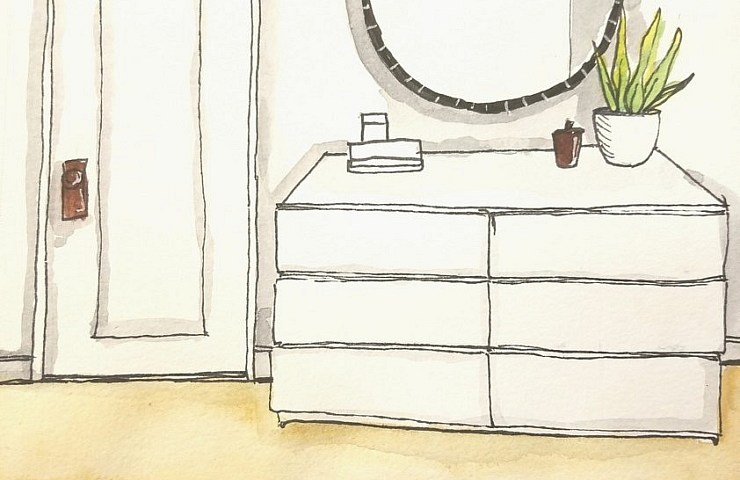There’s no denying that minimalism is a buzzword these days. The word itself evokes a design philosophy that is sparse, white and cleanly. In that same breath, minimalist spaces can also feel clinical, sterile and empty. Minimalist design is modern, geometric and simple. To be honest, even though I call myself a minimalist, I’m not a fan of this aesthetic at all.
There is a distinct line between minimalist design and minimalist philosophy, which is rarely discussed and frequently but erroneously combined. While minimalism might be centered visually on black and white shapes, the values associated with minimalism do not have to produce that result. The core of minimalist philosophy is best distilled down to a single question, “Does this thing add value to my life?” That thing (say it’s a painting) might add value by providing you with beauty, while a shelf might provide functional value. Taking the time to question what we keep in our space is a good way to get rid of excess, surrounding ourselves instead with objects that we truly love.
Clutter is inevitable, especially in the small quarters that most college students and graduates find themselves living in. It can be easy and fun to plan out the perfect décor that your room will have — complete with banners, photos and maybe even posters. Going for a specific look can mean unneeded purchases, that when combined with what we actually care about, potentially overwhelm a space with clutter. Clutter can cause a number of inconveniences, including the time that it takes to straighten up, as well as visual overcrowding. Having a room that is packed with décor and utility items is harder to organize and straighten. It’s more difficult to know what you have, and where the thing that you need actually is. If you have a drawer for just the stapler and tape, you’ll always know where the stapler and tape is going to be.
When I say my room is minimalist, I don’t mean that my room is a blank, white canvas. I want to have a space that is welcoming to be in. I have photos hanging, small paintings and just things that I enjoy looking at. That said, I’m totally aware of everything in my room. Everything in my line of sight adds value, and there’s nothing I keep “just because.” This makes it easier for me to clean because everything has its assigned place, and I’m not stuck trying to cram new things into spaces that are already full.
If I do want to make a new purchase, it needs to satisfy the “value” question. Will this object be worth the upkeep, money and attention it’s going to take up? Am I going to like this object after a month? Do I value this as much as the objects I already have? If that answer is no, chances are the purchase is not going to be something that comes home with me.
The basis of minimalism is to be intentional. You work hard for your money, but you also deserve an environment that is comfortable and inviting to be in. Intentionality is finding a balance between the two, so that you can make the best of your space.





Recent Comments